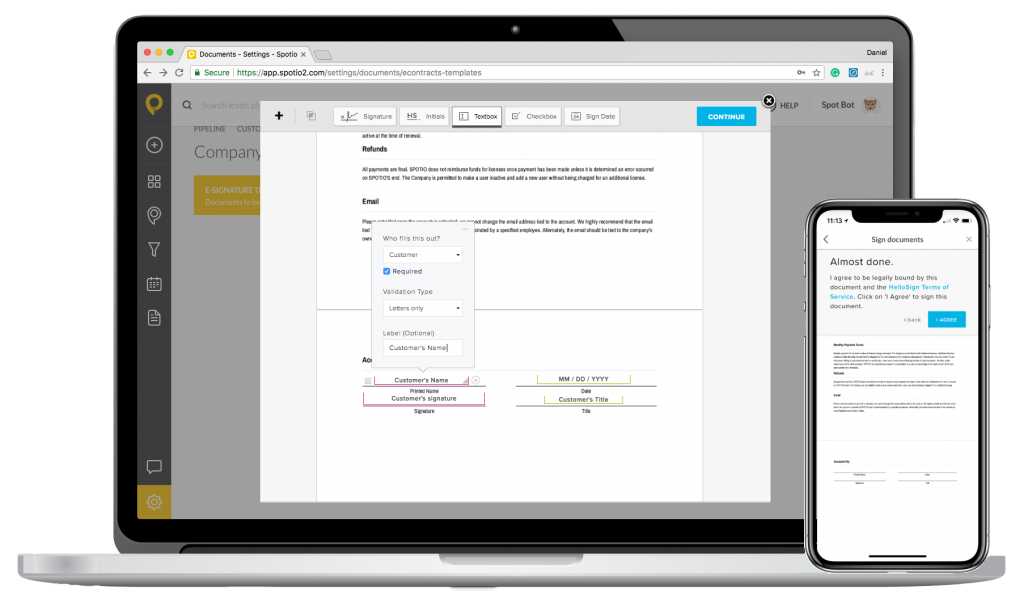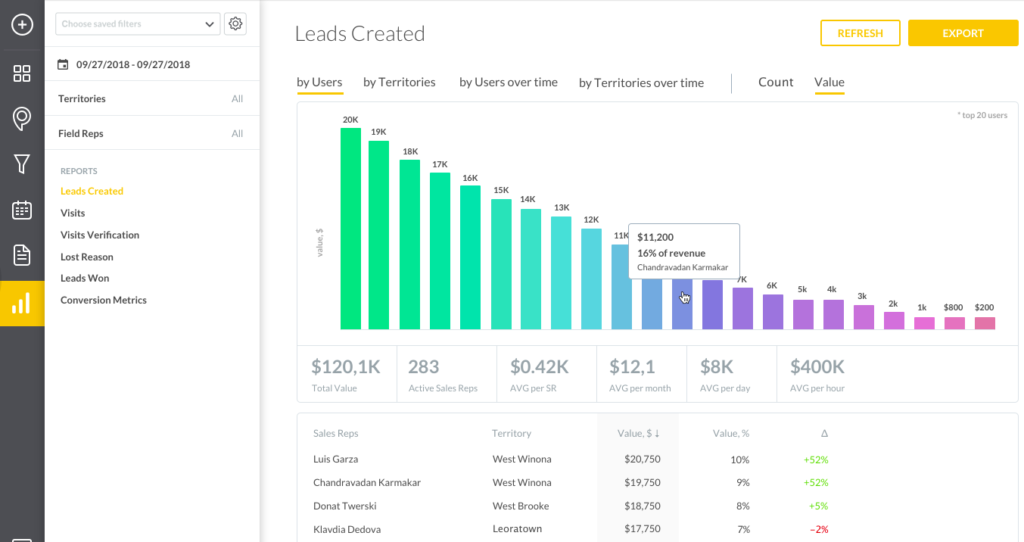At the end of every month, sales managers may be asking themselves a single question: Why is my sales team falling short of their selling quota?
Sales metrics might answer that question, but too often, sales managers look at metrics that are outside of their control. A Harvard Business Review study found that of 306 metrics sales managers track, only 17% are sales activities. The key to effective sales activity management is focusing on the metrics that matter — the ones you can actually influence.
In this guide, we’re going to look at:
What is Sales Activity Management?
Why You Should Track Sales Activities
8 Ways to Implement Sales Activity Management For Your Sales Team
Let’s dive in.
What is Sales Activity Management?
Sales activity management is defining the sales activities that will help your sales reps meet their goals, tracking associated metrics, and optimizing activities that aren’t producing the right outcomes.
Let’s get this out of the way: Sales activity management is not an excuse for team leaders to micromanage their sales reps. Instead, it’s a way to find leaks in a sales pipeline and reflect on a rep’s sales activities to sell smarter and close more deals.
As Salesforce found, the majority of sales leaders are now looking to technology to help them enhance sales activity management. As selling activities become more intertwined with tech, it makes sense that team leaders are seeking out ways to digitally track, monitor, and motivate their team on the ground.
Why You Should Track Sales Activities
The main reason to track sales activities is that they directly impact your profits. But profits don’t happen without people, so effective sales activity management means focusing on how you can support reps in their work.
Visibility
If you’re using software for sales activity management, you can slice-and-dice data to look for trends. For example, if you notice sales are lagging in a specific territory, you can check to see whether the rep covering that area is spending too much time getting from one appointment to the next. If that’s the case, route optimization could improve that rep’s efficiency and help them close more deals.
Goal Setting
Sales reps may have a quota, but they may need a little guidance on their way to that goal. Here’s an example that illustrates that concept:
Without Sales Activity Tracking
Sam knows he needs to close $20,000 in sales in Q1. His sales manager hasn’t defined which activities he should focus on to achieve that goal. As a result, Sam neglects to follow up with several leads and misses his sales goal.
With Sales Activity Tracking
Sam’s manager reviews sales data in the company sales management platform. Based on the past three quarters, Sam’s manager sees that to hit $20,000, a rep will need to make X number of sales calls and set X number of appointments. A rep will also need to follow up with leads at least twice before they convert. The sales manager then uses the software to automate these steps; Sam follows them and makes his quarterly sales goal.
Retention and Growth
By regularly analyzing sales team performance, you can see who your top performers are and who needs additional training. You can use that information to recognize your stars and grow talent from within. And you can even create incentive programs based on sales activity achievements
8 Ways to Implement Sales Activity Management for Your Sales Team
1. Discover Which Sales Activities Matter Most to Your Business
To take full advantage of sales activity management, it’s essential to look at key selling activities that are actually helping your sales team close deals.
- How are your sales reps contacting prospects?
- How many touchpoints did they need to move the prospect along in the pipeline?
- How many leads are they hitting in their assigned territories?
- How many demos are they booking?
By analyzing the numbers and results of your failed deals, it’s easier to spot where your team has gone wrong. Sales activity management can pinpoint when a deal stopped progressing, what the obstacle was, and how your sales rep tried to overcome it.
Using software takes the pain out of figuring out what these roadblocks were, and when they appeared. For example, sales managers can use SPOTIO’s lead management capabilities to track and manage leads by tagging them as:
- A “Not Interested” lead: If a lead isn’t interested, sales leaders can run a report six months or so down the road and create a list of prospects to re-engage.
- A “Future” lead: This helps sales reps flag “hot” prospects to come back to in a particular territory.
- A “Re-assigned” lead: Sales leaders can re-assign a lead from one rep to another based on their territories or lead management strategy.
All of this happens inside SPOTIO’s lead management software and its dedicated app, so reps have access to lead-specific information even when they’re out pounding the pavement.
2. Assign “Balanced” Sales Territories
Maximizing sales productivity means having your field reps selling in the right places. Building a sales territory plan assigning reps a balanced workload can help boost your team’s sales activity.
Sales territories segment customers for each rep using clear cut boundaries. Territories can be based on geography and other factors such as sales potential, referral source, or product type.

An example of a sales territory in SPOTIO
With clearly defined territories, sales leaders can spread the workload across their sales team structure while strategically addressing the needs of their assigned markets.
3. Track Your Field Reps in Real-Time
Have you ever been in the office while your reps are out selling and wondered if they’re making progress?
Sales activity management can help team leaders track their reps in the field in real time. Location verification tags — or pins — show each of your sales reps’ locations on a map, so you know where they are.
Tracking sales activity in real time makes it easier to schedule and plan what areas reps should target, and you can change up their strategy from afar.
Using SPOTIO, sales leaders can track the exact position of a sales rep in the field and access other information such as their:
- Location: Is the rep in the correct territory?
- Status: Are they interacting with a prospect or en-route to meet another lead?
- Date and time-stamped data: Who did they visit yesterday, and when?

An example of field rep tracking using SPOTIO. Tracking a field rep’s activity allows sales managers to make smarter decisions in real-time.
Between prospecting, meetings, and closing deals, sales teams have a lot to juggle when they leave the office. Using software like SPOTIO gives field sales reps and managers the information they need to make decisions about where the rep should be and what move they should make next.
4. Empower Reps to Sign Contracts While In The Field
Equipping your sales reps in the field with sales activity management software allows them to close contracts anywhere, even at a prospect’s door.
Emailing back-and-forth to get a contract signed can take up a lot of time. Instead, specialized software gives your reps immediate access to the files they need to close a deal on the spot. Using e-Contract functionality, reps can access files like product spec sheets and presentations and even collect signatures right from their mobile devices.

Cutting out the paperwork allows your reps to instantly move deals along in their sales pipelines without having to wait until they’re back in the office to prepare and send out contracts.
5. Use a Leaderboard to Track Performance (and Motivate Reps)
Every sales rep on your team is eager to hit their quota.
However, some sales leaders are now using leaderboards to encourage healthy competition in their teams and reward sales reps who hit their goals.
Using a leaderboard means when a metric does fall behind, a sales manager can help refocus a rep’s efforts to get them back on track.
For example, if your reps are falling behind on their number of monthly door knocks, try running a team contest to help unite your team and boost the number for the following month.
![]()
Using SPOTIO, teams can build customer leaderboards and measure performance against each other to push towards mutual goals and targets.
Having a team leaderboard that’s visible to the entire team is the perfect way to create some healthy in-house competition amongst your sales reps.
6. Stay in Contact with Your Field Reps
We all know communication is key when it comes to closing deals, especially when you’ve got sales reps out in the field.
Having a team leaderboard that’s visible to the entire team is the perfect way to create some healthy in-house competition among your sales reps.
Creating channels for reps to communicate with each other and the main office while out in the field is vital to keeping everyone on the same page.
A group messaging platform is the easiest solution for dispersed teams, and even better if it’s connected to your sales activity management platform.
For example, using SPOTIO’s in-app chat feature, sales managers can split reps into teams (i.e. Chicago southside team), which makes it easier to send information to specific sales territories.
Think of it as a Slack #channel inside your sales activity management software!
7. Use Sales Activity Data to See Where Your Reps Underperform
Without data, it’s almost impossible to plug holes in your sales funnels and pinpoint underperforming reps.
Collecting and analyzing sales activity data makes it easier for sales managers to find where their reps are struggling and identify whether a team member needs help.
More importantly, it gives managers the numbers they need to see which sales reps on their team aren’t getting their activities done.
Let’s imagine a sales rep isn’t booking the number of demos they should be. Are they finding it hard to qualify leads? Or are they struggling to turn prospects into demo opportunities?
By tracking sales activity and data, it’s easier for managers to see where the rep is struggling and come up with a solution to solve the problem. Once again, software makes this process a lot easier (not to mention saving a ton of time for sales managers.)
Using SPOTIO, sales managers can create pipeline and activity benchmarks and view custom dashboard reports to measure team performance and pinpoint funnel leaks.

At the click of a button, sales managers can use SPOTIO to track how many leads a sales rep has created or how many territories they’ve visited.
8. Forecast Growth
Last but not least, sales activity management makes it easier for teams to forecast. Sales forecasting is vital for finding potential problems before they ever arise.
Forecasting is only successful when sales activities are monitored along a pipeline from start to finish. It’s crucial sales managers know the details of every deal, from prospecting to demo to how long it took to sign the deal. The only way to keep track of everything is to feed every piece of data back into a CRM or sales activity management software.
At the end of every month, quarter, or year, sales managers can then access the data quickly to produce accurate sales forecasts and work backwards from their initial goals.
Wrapping Up
The selling game for field reps has changed — for the better.
The days of door knocking with a clipboard and briefcase are over. Thanks to the rise of tech for field reps, it’s never been easier for sales teams to work together and communicate when they’re on the move. Team leaders can use sales activity management software to assign sales territories, track their reps, and even help them sign contracts on the go.
It’s clear that the majority of sales leaders see sales activity management software as the way of the future. How would a sales management platform improve your bottom line?
______
Questions or comments? Contact SPOTIO at [email protected] or comment below.
SPOTIO is the #1 field sales acceleration and performance management software that will increase revenue, maximize profitability, and boost sales productivity.
Want to see a product demonstration? Click here to see how SPOTIO can take your sales game to the next level.



